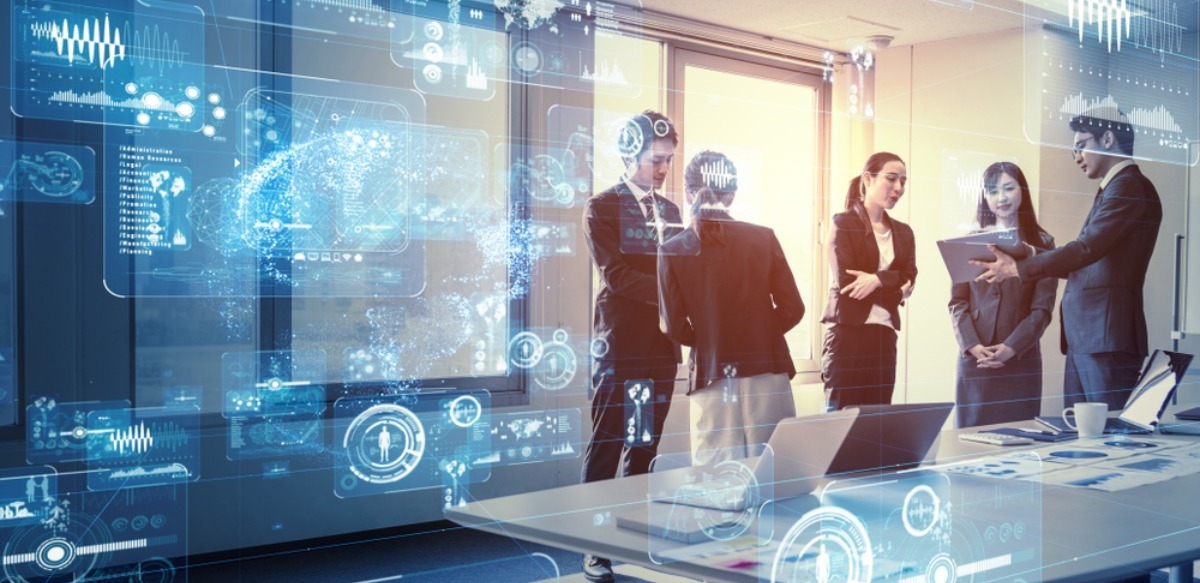AI-driven solutions are already accelerating productivity in the workplace, improving business performance, enhancing the customer experience, and creating new forms of value in the marketplace.
In the years to come, however, adopting AI will ultimately result in AI-centric businesses that operate differently from the business structures we are used to. Some argue, in fact, that these businesses have already arrived.
Below, we’ll look at examples of these businesses, plus some of the most critical ways that AI will affect the business world.
4 Ways AI-Driven Solutions Will Forever Change Business
According to some AI experts, today’s largest organizations, such as Amazon and Google, are powered by AI. Not only that, these companies’ use of AI is precisely what has allowed them to become so dominant and, in the years ahead, their operating model will become the new normal.
In the past, humans operated businesses while machines automated certain tasks, such as manual labor.
In tomorrow’s economy, however, we can expect to see businesses where AI and machines are actually performing the operational tasks, while humans oversee business strategy.
The book Competing in the Age of AI makes this argument, suggesting that companies building their business and operating models around AI can scale up rapidly and expand their scope more widely, all thanks to AI.
Organizations that are willing and able to leverage AI in this way will have a chance to compete in the AI-driven world, but those that won’t will likely be left behind.
To understand why, let’s look at some of the biggest benefits of AI-driven solutions:
Scalability
Any kind of software, AI included, can scale exponentially without the limitations that are imposed upon physical systems.
To illustrate what this means, consider:
- Physical stores, which cannot scale without retail personnel, brick-and-mortar locations, supply chains, and other physical assets
- Manufacturing, which again relies upon physical equipment and people to scale up
- The human workforce, which requires ongoing recruitment, training, and development
In contrast, AI-driven solutions can operate semi-autonomously, with far less input from people.
Also, AI is still more scalable than physical automation, such as robots, which requires much more time not only to research, but also to deploy.
Expanded scope
Scaling refers to upward mobility, such as the expansion of a company’s customer base or income.
Scope refers to the “width” of the company’s services or offerings.
Both are interconnected, and AI can enable the expansion of each.
As mentioned above, for instance, AI that automates a single task can be scaled immediately and infinitely – a single AI that performs a particular job task can immediately take over that task across an entire organization, or even an entire industry.
At the same time, the ease of AI deployment into a variety of business areas makes it easy to expand laterally.
An organization that applies AI to scale up in one market can easily and cost-effectively apply the same model in another industry.
Cost efficiency
Cost efficiency is another one of the biggest benefits of AI.
While the initial setup and investment costs may be costly, once the AI has been deployed, it can generate massive cost savings.
For instance, a recommendation engine – such as Amazon’s “recommended products” that appear within their website – can generate massive profits from product upsells and cross-sells.
Designing and optimizing that engine may take time and effort, but it will generate significant and probably exponential returns over the course of its lifetime.
Likewise, an AI-driven solution that automates customer care, such as a chatbot, can drastically reduce the costs associated with call centers. Agara has already demonstrated this by automating 80% of Procter and Gamble’s customer service rep tasks.
Productivity
The scalability mentioned above comes in large part from the vast productivity improvements offered by AI.
AI, after all, doesn’t sleep, it doesn’t slow down, it doesn’t eat, it doesn’t make mistakes, and it can be replicated as often as needed.
Also, AI can perform its tasks at multiple orders of magnitude faster than human counterparts.
An AI, for instance, can read legal documents and summarize the text in seconds. Humans performing the same task, on the other hand, may take hours to perform the same task.
How to Prepare for the AI-Powered Economy
AI, according to some, will have a larger impact on the world that the internet did.
It will affect every area of our life, from the way we communicate to the way we live to the way we work and interact.
Importantly, it will not simply result in new jobs or the destruction of old jobs, it will actually restructure businesses, the workplace, and the economy itself.
There is an ongoing debate about whether the net result of this change will positively or negatively affect the future workplace. However, what is undeniable is that AI will reshape the economy, so it is best to understand its benefits, develop an adoption strategy, and invest now.













